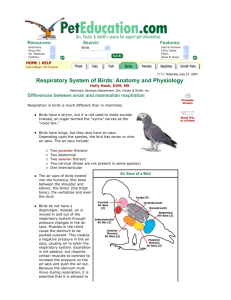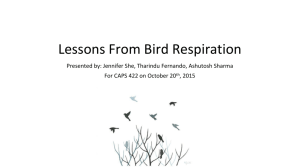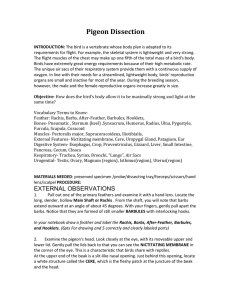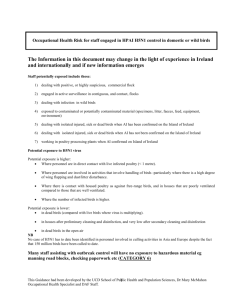ИНДИВИДУАЛЬНЫЙ СБОРНИК ЗАДАНИЙ Вы должны
advertisement
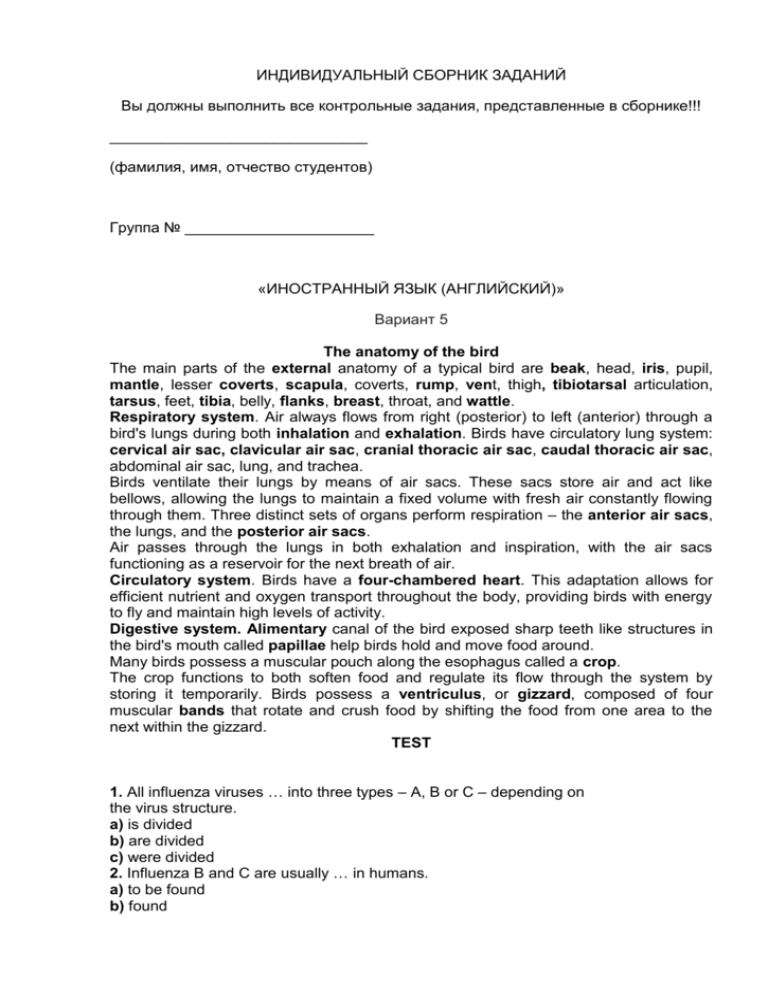
ИНДИВИДУАЛЬНЫЙ СБОРНИК ЗАДАНИЙ Вы должны выполнить все контрольные задания, представленные в сборнике!!! ______________________________ (фамилия, имя, отчество студентов) Группа № ______________________ «ИНОСТРАННЫЙ ЯЗЫК (АНГЛИЙСКИЙ)» Вариант 5 The anatomy of the bird The main parts of the external anatomy of a typical bird are beak, head, iris, pupil, mantle, lesser coverts, scapula, coverts, rump, vent, thigh, tibiotarsal articulation, tarsus, feet, tibia, belly, flanks, breast, throat, and wattle. Respiratory system. Air always flows from right (posterior) to left (anterior) through a bird's lungs during both inhalation and exhalation. Birds have circulatory lung system: cervical air sac, clavicular air sac, cranial thoracic air sac, caudal thoracic air sac, abdominal air sac, lung, and trachea. Birds ventilate their lungs by means of air sacs. These sacs store air and act like bellows, allowing the lungs to maintain a fixed volume with fresh air constantly flowing through them. Three distinct sets of organs perform respiration – the anterior air sacs, the lungs, and the posterior air sacs. Air passes through the lungs in both exhalation and inspiration, with the air sacs functioning as a reservoir for the next breath of air. Circulatory system. Birds have a four-chambered heart. This adaptation allows for efficient nutrient and oxygen transport throughout the body, providing birds with energy to fly and maintain high levels of activity. Digestive system. Alimentary canal of the bird exposed sharp teeth like structures in the bird's mouth called papillae help birds hold and move food around. Many birds possess a muscular pouch along the esophagus called a crop. The crop functions to both soften food and regulate its flow through the system by storing it temporarily. Birds possess a ventriculus, or gizzard, composed of four muscular bands that rotate and crush food by shifting the food from one area to the next within the gizzard. TEST 1. All influenza viruses … into three types – A, B or C – depending on the virus structure. a) is divided b) are divided c) were divided 2. Influenza B and C are usually … in humans. a) to be found b) found c) find 3. Type A influenza infects … people … animals, including birds, pigs, houses, seals. a) both … and b) neither … nor c) either … or 4. Avian subtypes … in humans and in animals. a) find b) has found c) have been found 5. All living things change, but influenza A viruses change quickly, constantly and sometimes …. a) continually b) cataclysmically c) unpredictably 6. Avian viruses generally … affect humans, but in 1997, an outbreak of bird in Hong Kong infected 18 people, six of whom died. a) do not b) did not c) have not 7. Human cases of bird flu … in Netherlands, Canada and throughout Asia. a) have been reported b) has been reported c) have reported 8. People become sick after direct contact with infected birds or … surfaces, not from contact with other animals. a) dirty b) natural c) bird-contaminated 9. Domestic poultry become … from contact with these birds or with contaminated water, feed or soil. a) is infected b) infected c) infects 10. Bird flue spreads … . a) quickly b) quick c) slowly 11. Heat … the virus. a) destroys b) keeps c) protects 12. Scientists don’t think that migratory birds … the virus from continent to continent because outbreaks have not followed traditional flyways. a) is carrying b) carry c) are carrying 13. Fifteen known subtypes of influenza A virus … affect birds. a) may b) can c) must 14. Rabies is the … disease with aggressive clinical behavior. a) anthropozoonostic b) cat-scratch c) skin 15. … is accompanied by the affection of central nervous system, and as a rule ends with animal’s death. a) dog’s parvovirus b) bovine virus diarrhea c) rabies







